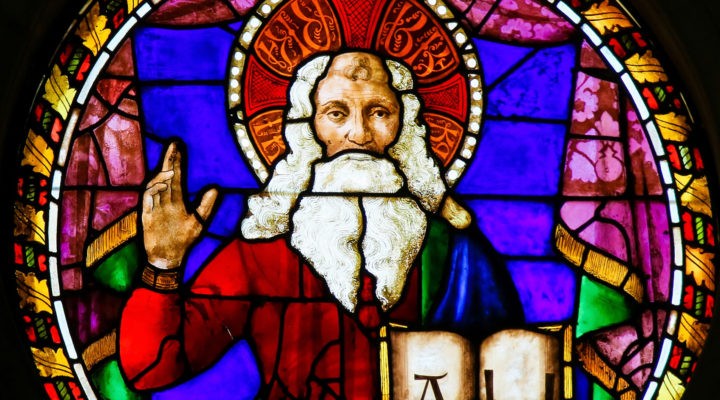Throughout the English Bible, the normal pronouns assigned to God are “he” and “him.” Many references to God within church practice typically fit into this same assignment. However, when we look at the instances in the Bible where imagery for God is motherly and nurturing, we can begin to see God defying the typical gender of male.
Understanding God to be a man often comes from the tendency to give God male pronouns and traits like “powerful” and “Father,” which can be associated with men’s societal norms. A lot of people don’t remember or know the times where the Bible tells us about a more feminine side of God.

Ashlan Rogers
Passages like Isaiah 49:15, where God is symbolized as a nursing mother; Isaiah 66:13, where God embodies a comforting mother; Isaiah 42:14, where God is compared to a woman in childbirth; Psalm 123:2-3, where God is comparable to a woman; and Psalm 131:2, where God once again is compared to a mother. All these are examples of a feminine side of God.
Many churches have gender and social hierarchies benefiting those who are more like the biased view of God, regardless of theologies that support diversity in God’s image. In church life and polity, men are often viewed as the ones who are most like God both in image and social roles.
In statements from the Council on Biblical Manhood and Womanhood and the Southern Baptist Convention, we can see support for this hierarchy. The Danvers Statement is a highly endorsed set of ideologies by CBMW that highlights theological complementarianism — meaning men and women have separate roles communicated through Scripture like marriage and household order. The 1984 Resolution on Ordination and the Role of Women in Ministry is the main source of theological ideas about women in the SBC. It clearly states that women will not be allowed to participate in leadership roles, pastoral positions or ordination.
Statements like these can be dehumanizing and reduce women to sexual beings meant for reproduction and homemaking. The creation story is a foundational passage to begin the argument against strictly male characteristics of God because God created male and female in God’s image, implying that God could not know and create a female in the image of a male. This demonstrates that God transcends any notion of gender constructs and that each sex was created equally and in a mirror to God’s self.
“The creation story is a foundational passage to begin the argument against strictly male characteristics of God because God created male and female in God’s image.”
This cycle of using male language to refer to God has imposed traditional gender roles onto church members and followers of God.
Support for feminine God-language and the results of this may be seen in feminist theological writings like those from Susan Shaw and Molly Marshall, who argue for inclusion and equal treatment in church environments. Shaw, whose writing is featured in Sources of Light, suggests alternative language for God as a task that feminist theologians seek to implement to reverse patriarchal mindsets. Marshall highlights the compassion of Jesus for women in many passages throughout the New Testament that challenge the structures that oppressed women.
The argument here is not for more feminine God language to be introduced into church life and practice, but rather for the retraction of the existing male-dominant images of God that empower patriarchal systems and the subordination of women.
Patriarchal imposition of male dominance is not biblical but rather the result of sin by the dominant group, set up by the hierarchy in biblical times. Today, we do not live in an era where women need men to have a life, and the new millennium has allowed for secular change and progression.
As Christians, we must recognize this progression and display it in church life and practices, beginning with how God is presented and described and then bridging into women’s right to preach and produce divine fruitfulness.
Ashlan Rogers is a student at Wingate University, where she is a double major in religious studies and psychology. She is interested in the psychology of religion and feminist theology. She hopes to attend graduate school for psychology and continue exploring Christianity in an academic setting.
Related articles:
Was Addie Davis’ ordination an anomaly or a precursor for the time? | Opinion by Allison Barbee
How the male-centered image of God marginalizes women and disabled persons | Mallory Challis
I knew the truth about women in the Bible, and I stayed silent | Opinion by Beth Allison Barr


